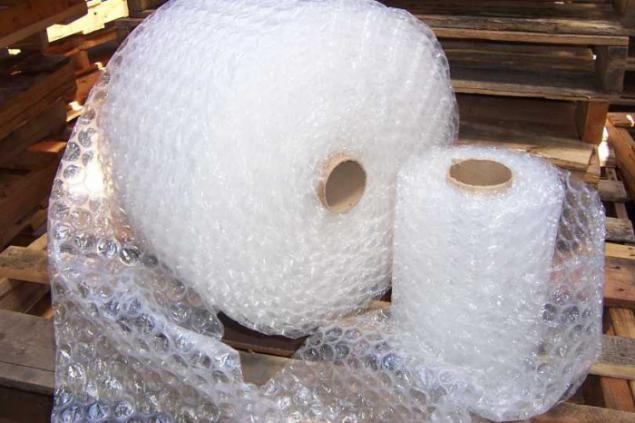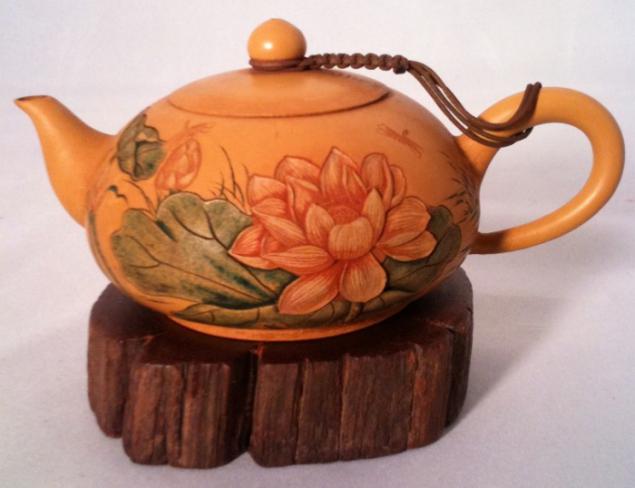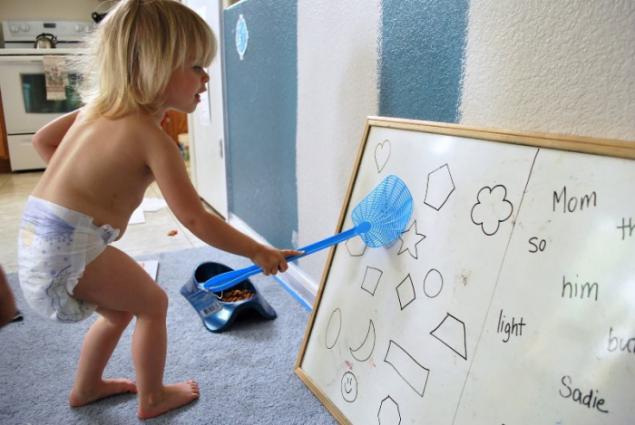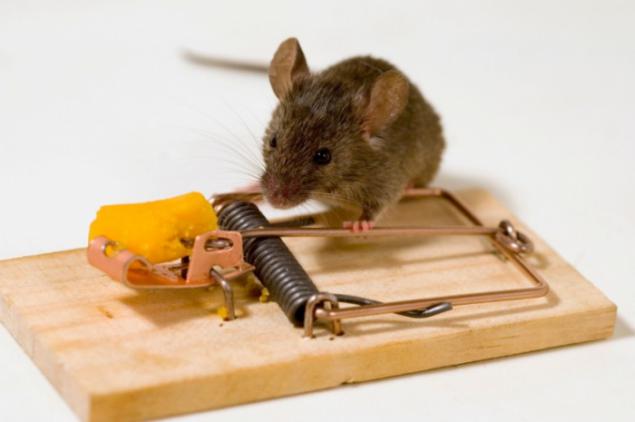Ideal invention
 Bashny.Net
Bashny.Net
Continuous improvement and improvement of tools and household items make our lives easier and more convenient. For example, if today someone will try to write original pen in 1868 by Sholes and Glidden, is writing a thesis, it will cover the hands of countless calluses. And if you had to open a medieval castle, you were working for a long time with him before you learned how to make a sharp blow to the key that was just necessary to open ...
However, paradoxically, there are now a number of things that, despite the fact that since their invention has been more than a century, is still preserved in its original form without improvements.

Barbed wire
In the XIX century on the prairies of Oklahoma was quite difficult to make a fence for the protection of places of grazing. After all, there are not enough wood to build fences. What to do? Four local boys in the late 1870s came up with the design of the fence, consisting of the rare supporting pillars and stretched barbed wire between them. Barbed wire was patented and since then has produced unchanged.

Bubble wrap
In the late 1950s, designers Alfred Fielding and Marc Chavannesu came up with a brilliant idea, ideal for aesthetic interior design of the space age: cellophane volume tactile wallpaper! Unfortunately, the plastic curtains with air bubbles did not become fashionable. Then innovators decided to just change the designation of the invention. In 1964, they patented their own "method of manufacturing a laminated gasket material." Thus bubble wrap (for English - bubble wrap) has become the ideal way to keep the fragile and highly valuable items during transportation. This package has been widely used due to its practicality and low cost.

Rocking chair
The rocking chair is not as old as you think. These chairs began to appear in the early 18th century in the United States and is still popular with people suffering from diseases of the back or the musculoskeletal system. It is not just soothing rocking. Rocking chairs automatically adjust your center of balance to the one who sits in them, each time he held a comfortable position.

Staples
Construction of a thin wire, which flooded the patent offices in the late 19th century, there were all sorts of forms - in the form of wings, triangles, pretzels and so on, but the appointment they had the same thing: to hold a certain number of sheets of paper. All of them have been patented, except that form to which we are accustomed in 100 years. Standard oblong design "Pearl", which has a controversial origin, nevertheless defeated all other, throwing them in a drawer stories.

Teapot
Archaeologists believe that the kettles were invented in China during the reign of the Yuan Dynasty, which began with 1279. The first teapots were made of clay and is likely to have been modified over the years. It is believed that the original kettles were calculated per serving, thus stands for the appointment of the nose, straight from people whose drinking and sipping tea. Today, you can buy a teapot made of porcelain, glass, paper, or titanium. But his simple and perfect design, consisting of a handle, lid and spout, remained unchanged for hundreds of years.

Fly swatter
The handle and small dense mesh at the end. It is a primitive but effective device is in almost every home, and it is indispensable in the summer months, to fight the flies flies, mosquitoes and wasps. "Killer on the fly" was patented in 1900 by Robert Montgomery. This man was a public health worker in Kansas and popularized his invention to destroy flies to stop the spread of disease. Strangely enough, but such a primitive fly swatter was very effective weapon against insects shifty.

Mousetrap
God forbid your home zavedutsya mouse. Get rid of them will be a real problem. And if the tenants do not have a cat who is not averse to hunt mice, the best way would be a mousetrap. There was a time when the mice were terrible parasites: these crafty animals were a real threat to children and food, as well as carriers of various diseases, until the plague. Fortunately, in 1894, William Hooker invented a spring trap. And in 1903, John Mast has made design improvements, making it more safe to download bait. Its design is mousetrap is still used today.
©
However, paradoxically, there are now a number of things that, despite the fact that since their invention has been more than a century, is still preserved in its original form without improvements.

Barbed wire
In the XIX century on the prairies of Oklahoma was quite difficult to make a fence for the protection of places of grazing. After all, there are not enough wood to build fences. What to do? Four local boys in the late 1870s came up with the design of the fence, consisting of the rare supporting pillars and stretched barbed wire between them. Barbed wire was patented and since then has produced unchanged.

Bubble wrap
In the late 1950s, designers Alfred Fielding and Marc Chavannesu came up with a brilliant idea, ideal for aesthetic interior design of the space age: cellophane volume tactile wallpaper! Unfortunately, the plastic curtains with air bubbles did not become fashionable. Then innovators decided to just change the designation of the invention. In 1964, they patented their own "method of manufacturing a laminated gasket material." Thus bubble wrap (for English - bubble wrap) has become the ideal way to keep the fragile and highly valuable items during transportation. This package has been widely used due to its practicality and low cost.

Rocking chair
The rocking chair is not as old as you think. These chairs began to appear in the early 18th century in the United States and is still popular with people suffering from diseases of the back or the musculoskeletal system. It is not just soothing rocking. Rocking chairs automatically adjust your center of balance to the one who sits in them, each time he held a comfortable position.

Staples
Construction of a thin wire, which flooded the patent offices in the late 19th century, there were all sorts of forms - in the form of wings, triangles, pretzels and so on, but the appointment they had the same thing: to hold a certain number of sheets of paper. All of them have been patented, except that form to which we are accustomed in 100 years. Standard oblong design "Pearl", which has a controversial origin, nevertheless defeated all other, throwing them in a drawer stories.

Teapot
Archaeologists believe that the kettles were invented in China during the reign of the Yuan Dynasty, which began with 1279. The first teapots were made of clay and is likely to have been modified over the years. It is believed that the original kettles were calculated per serving, thus stands for the appointment of the nose, straight from people whose drinking and sipping tea. Today, you can buy a teapot made of porcelain, glass, paper, or titanium. But his simple and perfect design, consisting of a handle, lid and spout, remained unchanged for hundreds of years.

Fly swatter
The handle and small dense mesh at the end. It is a primitive but effective device is in almost every home, and it is indispensable in the summer months, to fight the flies flies, mosquitoes and wasps. "Killer on the fly" was patented in 1900 by Robert Montgomery. This man was a public health worker in Kansas and popularized his invention to destroy flies to stop the spread of disease. Strangely enough, but such a primitive fly swatter was very effective weapon against insects shifty.

Mousetrap
God forbid your home zavedutsya mouse. Get rid of them will be a real problem. And if the tenants do not have a cat who is not averse to hunt mice, the best way would be a mousetrap. There was a time when the mice were terrible parasites: these crafty animals were a real threat to children and food, as well as carriers of various diseases, until the plague. Fortunately, in 1894, William Hooker invented a spring trap. And in 1903, John Mast has made design improvements, making it more safe to download bait. Its design is mousetrap is still used today.
©
Tags
See also
These 19 great inventions will make your life easier. Really awesome!
Simplifier of life
Gadgets that will make life easier
How to block Android device touch screen
5 exercises improve vision Bates
The history of the toothbrush
US Army - the biggest myth of the twentieth century
research strategies
Education as a transformation of the person and personal development
















